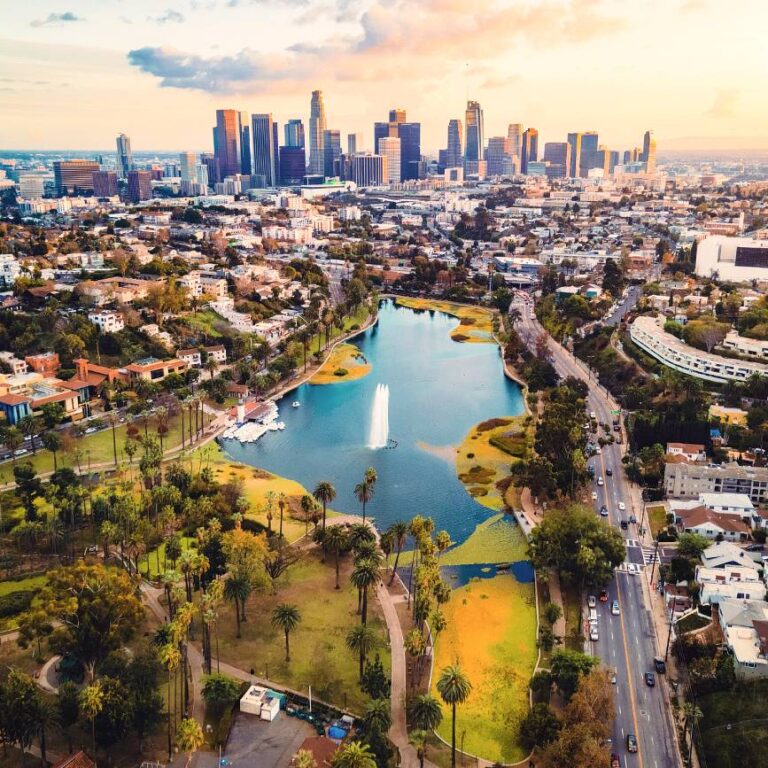Picture Yourself Here
Los Angeles flourishes as a diverse cultural hub, cultivating community and personal growth in its dozens of vibrant neighborhoods. Renowned medical institutions and cutting-edge research centers propel scientific progress, while diverse patient interactions enhance learning for future health care professionals. Offering a Mediterranean climate, abundant recreation, and cultural riches, L.A. provides a balanced lifestyle. Beyond its iconic imagery of palm trees and Hollywood glamour, the city boasts world-class art, music, theater, and global cuisine. In this dynamic realm of cultural richness and innovation, Los Angeles truly shines.

Explore
You’ll find no shortage of public information about this vibrant region. Below we’ve compiled a sampling of resources and places to explore in Los Angeles and the surrounding region.
-
Through the years, USC has remained committed to its original University Park neighborhood as well as to its “new” Boyle Heights/Lincoln Heights neighborhood, which has housed the Health Sciences campus since its opening in 1952.
Both areas are among the most culturally vibrant and historically significant in the city. The 79-acre USC Health Sciences campus is located northeast of Downtown Los Angeles and adjacent to Los Angeles General Medical Center, a partner of the university’s medical school since 1885. Housing the Keck School of Medicine of USC, the School of Pharmacy, programs in occupational sciences and physical therapy, and research laboratories for the School of Dentistry as well as three major teaching hospitals, this campus is a focal point for students, patients and scientists from around the world.
The neighborhoods surrounding the Health Sciences campus are steeped in cultural and historical significance. Once called Paredon Blanco (White Bluffs), Boyle Heights is located just south of the campus and east of Downtown Los Angeles. The area was dominated by vineyards and grazing land until the 1850s, when Andrew Boyle purchased land and built a mansion on what is today Boyle Avenue. His son-in-law, William Workman, a city councilman who later served as mayor and city treasurer, subdivided the land in the 1870s, named the area in honor of his late father-in-law, and fought for an irrigation aqueduct to make the land habitable as well as for transportation to make it accessible. When his efforts paid off, Boyle Heights became one of the garden spots of the city.
Lincoln Heights, to the north of the campus, experienced its first significant development in the 1880s and 1890s. Originally known as the Northeast Area, it acquired its current name after Lincoln High School was founded in 1914 and its principal campaigned to have the area named for the school.
Through the years, both communities have served as gateways for new immigrant groups, reflecting the cultural richness that diversity inevitably brings. In the early 20th century, Boyle Heights attracted large numbers of Armenians, Molokan Russians and Jews, and later Japanese and Mexican Americans. Lincoln Heights was home to Italians and Yugoslavs, who moved in around World War I, later giving way to Mexican Americans and Chinese residents.
Today, Boyle Heights and Lincoln Heights are a mosaic of past and present, serving as home to many outstanding historical, educational, cultural and arts resources.


